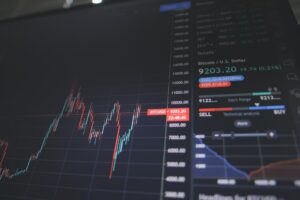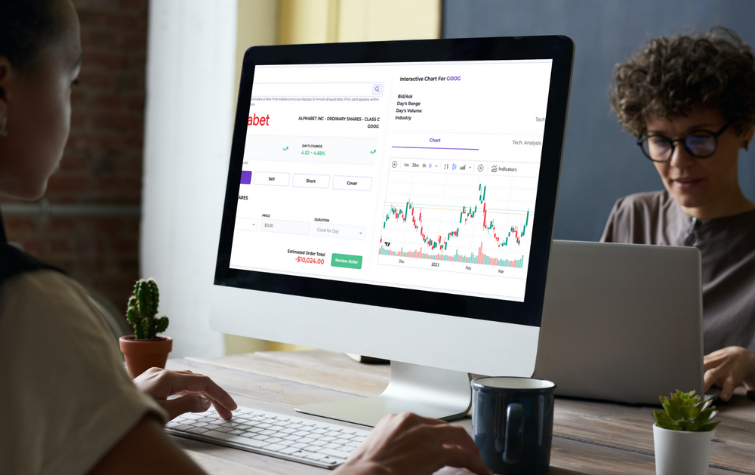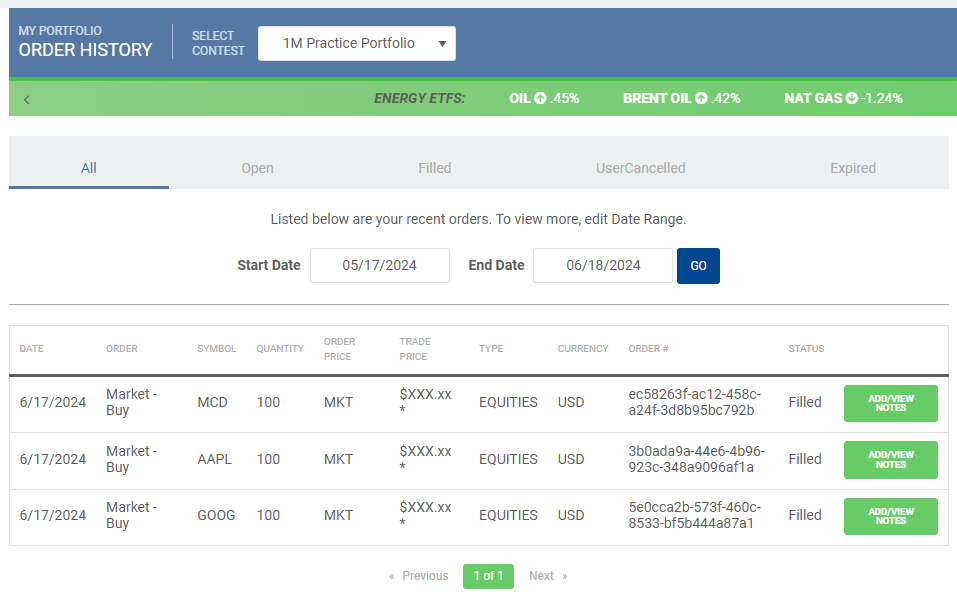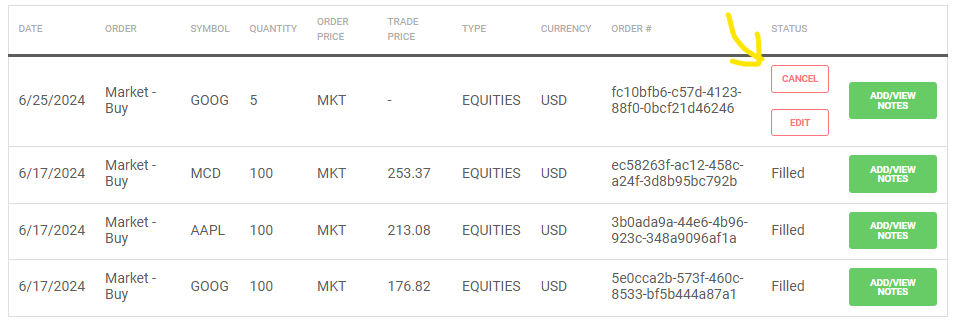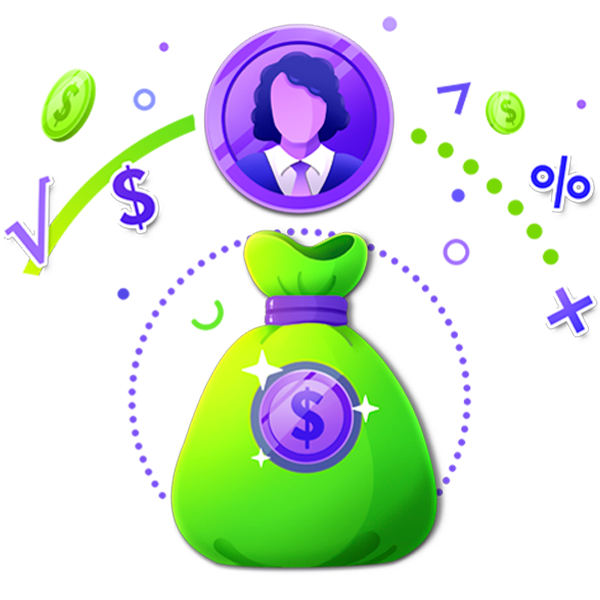We offer an unbiased view of the ten largest U.S. mutual funds — pointing out the pros and cons of both active and passive funds, while simultaneously suggesting real alternatives. Almost all of these funds come in different shares classes, each with their own fee structure, and are ranked by assets under management as reported by Morningstar.
1. Pimco Total Return (PTTAX) — Assets: $263 billion
Topping the list is Pimco Total Return, a bond fund managed by the famous Bill Gross. Mr. Gross has quite a reputation in the fixed income world, and for good reason—his long-term track record is very good. He made some poor market calls in 2011, namely shortening the fund’s duration and reducing Treasury exposure. As a result, he missed out on the drop in interest rates which drove a solid rally in the latter half of the year. Only time will tell how frequent these slip ups occur. The net annual expense ratio for A shares is 0.85% (with a 3.75% front end load) and 1.60% for C shares, although some of the other classes have lower fees. The institutional shares, for instance, cost about 0.46% per year.
Pros:
- Solid long-term track record
- Capable management team with extensive experience in fixed income
Cons:
- The portfolio’s duration is now a little longer than we would like
- While it hasn’t created major issues so far, the significant assets base could limit its ability to move in and out of the best investments
- Depending on the share class, this fund can be expensive
It’s hard to argue with exposure here. Following the 2011 slip up, Gross increased duration and benefitted from falling rates in 2012, and has since reduced duration again. So despite its large size this fund remains relatively nimble. In the end, it may depend on what share class is purchased. Each holds a different set of fees, and paying anything over 1% annually is hard to justify for a bond fund, especially considering the existence of cheaper ETF alternatives.
2. Vanguard Total Stock Market Index Fund (VTSMX) — Assets: $190 billion
Next is the Vanguard Total Stock Market Index Fund. Rather than mimic the S&P 500, this fund provides capitalization weighted exposure to the entire US equity universe across all sizes and styles. As a passively managed index fund it does not attempt to outperform the market. It comes in two shares classes: Investor shares and Admiral shares. There is a $3,000 minimum on the former and a $10,000 minimum on the latter if opening a new account. The net annual expense ratios are 0.17% and 0.05% respectively.
Pros:
- Very inexpensive relative to actively managed stock funds, as well as other passively managed index funds
- It provides more exposure to mid and small cap companies than funds tracking the S&P 500
Cons:
- The fund is market cap weighted, so while it provides exposure to mid and small it remains heavily concentrated in large cap
- Capitalization-weighted indexes suffer from an inherent bias toward “hot” segments of the market, and often feature concentrated economic sector bets
Vanguard is well known for keeping investor costs low. And this fund’s broad exposure to US equities make it a prime candidate for a core domestic holding, particularly within qualified retirement plans that cannot invest in ETFs. However, where available we suggest going with its ETF alternative: the Vanguard Total Stock Market ETF (VTI). Its expense ratio is almost as low as the Admiral shares at 0.06% and there is no minimum investment. Given this is a market cap weighted fund concentrated primarily in large firms, we also suggest adding exposure to small and mid through supplemental ETF. The Vanguard Mid-Cap ETF (VO) and Vanguard Small Cap ETF (VB) are viable, low-cost options.
3. American Funds Growth Fund of America (AGTHX) — Assets: $115 billion
The most popular of the American Funds offerings is the Growth Fund of America. It is an actively managed fund, which according to American Funds’ website, invests at least 65% of assets in common stocks, of which up to 25% can be international. The net annual expense ratios for A shares and C shares is 0.68% (plus a 5.75% front end load) and 1.46%, respectively.
Pros:
- 10-year performance for A shares relative to the S&P 500 (using SPY as a proxy) is strong, but investors should always be aware of survivorship bias when considering long term records of mutual funds
- American Funds has a reputation for attracting talented managers and analysts
- Fairly good sector exposure
Cons:
- Very expensive
- Shorter-term performance is less than spectacular with both A shares and C shares trailing SPY on a one-, three-, and five-year basis
- High asset base could limit investment options
- American Funds in general are suffering from a massive outflow of assets. By definition, this causes forced selling and creates a performance headwind
Despite American Funds’ reputation, it is extraordinarily difficult to justify paying such high fees given underperformance relative to low cost index ETFs like the SPDR S&P 500 ETF (SPY). More importantly, a closer comparison based on the fund’s style and size characteristics is the Vanguard Growth ETF (VUG), which tracks the Russell 1000 Growth Index. While the ETF hasn’t been around long enough to perform a ten-year comparison, it significantly outperformed A shares and C shares on a one-, three-, and five- year basis (as of 6/30/2012). Yes, the Growth Fund of America has a foreign component which makes a direct comparison to US equities inaccurate. And yes, foreign has done worse than domestic in recent years. But even if you created a 75/25 blend (the maximum the fund is allowed to invest in foreign) of VUG and VEU (Vanguard FTSE All World ex-US ETF) you would have still handily beat this fund over the same one-, three-, and five-year basis. All of this makes a strong case for ETFs. And if it’s in a qualified retirement plan with limited investment options, a lower cost index fund is likely a better bet.
4. Vanguard 500 Index Investor Fund (VFINX) — Assets: $111 billion
Coming in at number four is the Vanguard 500 Index Investor Fund. Passive index fund tracks the S&P 500, meaning it is primarily invested in large cap stocks. Like the Vanguard Total Stock Market Fund, it comes in two share classes: Investor shares and Admiral shares. Net annual expense ratios are 0.17% and 0.05%, respectively.
Pros:
- Very inexpensive relative to actively managed stock funds, as well as other passively managed index funds
- Low portfolio turnover of only 4% provides greater tax efficiency
Cons:
- The fund is market cap weighted, and given it tracks the S&P 500 there is minimal exposure to mid and small cap companies
- Capitalization weighted indexes suffer from an inherent bias toward “hot” segments of the market, and often feature concentrated economic sector bets
This is a solid choice for core domestic equity exposure. But given its concentration in large cap, it is wise to add supplemental mid and small cap exposure. Vanguard also offers a cheap ETF alternative: Vanguard S&P 500 ETF (VOO). While volume isn’t as high as the SPDR S&P 500 ETF (SPY), it carries a lower net annual expense ratio at 0.05%. There is also an institutional version of this fund, the Vanguard Institutional Index (VINIX), which charges a meager 0.04% annually.
5. Vanguard Total Bond Market Index (VBMFX) — Assets: $111 billion
The fifth largest mutual fund is the Vanguard Total Bond Market Index. It comes in Investor and Admiral shares, with annual expense ratios of 0.22% and 0.10%, respectively. This is a passively managed fixed income fund that attempts to track the Barclays Capital U.S. Aggregate Float Adjusted Index—a broad value weighted index of dollar denominated investment grade bonds. The primary holdings are US Treasuries, corporate bonds, and agency mortgage-backed securities. According to the prospectus, the fund maintains a dollar-weighted average maturity range of 5 to 10 years.
Pros:
- Provides broad exposure to multiple areas of the fixed income market
- Inexpensive
Cons:
- We believe maturity and duration are a bit long given the current interest rate environment
- No exposure to inflation-protected bonds
- Almost no international exposure
This fund is cheap and it also has a low cost ETF brother: Vanguard Total Bond Market ETF (BND). Its broad fixed income exposure makes it a good candidate for a core fixed income holding, but it’s not without drawbacks. It could be improved with the addition of inflation-protected and international bonds. Moreover, its weighted average maturity of over 7 years, and duration of 5 years, means there’s a sizeable amount of interest rate risk. We would suggest a shorter maturity/duration profile to protect against a potential jump in rates.
6. American Funds EuroPacific Growth (AEPGX) — Assets: $94 billion
Coming in at number six is the EuroPacific Growth fund. This is a growth-oriented fund that, according to the prospectus, normally invests at least 80% of assets in European and Pacific Basin securities. According to Morningstar.com, the fund had over 20% of its equity weight in Emerging Markets. It comes in many share classes. The A shares carry a 5.75% front end load and 0.84% annual expense ratio, while the C shares annual expense ratio comes in at 1.62%.
Pros:
- Good regional exposure spanning both developed and emerging markets
- American Funds has a reputation for attracting talented managers and analysts
- With over 300 equity holdings, the fund is broadly diversified
Cons:
- Very expensive
- The fund is heavily concentrated in large cap stocks with minimal exposure to small and mid
- American Funds in general are suffering from a massive outflow of assets. By definition, this causes forced selling and creates a performance headwind
This is an expensive mutual fund which may not be worth the price given mixed performance figures. A close comparison based on the fund’s makeup is the MSCI All Country World ex USA Index. The A shares bested this index over most time periods (one-, three, five-, and ten-year). But when factoring in the 5.75% sales load, the fund underperformed on a one- and three-year basis, and was only slightly ahead of the index on a ten-year basis through 6/30/2012. It’s also important to keep in mind these figures exclude the impact of taxes on distributions and sales of fund shares, a very real headwind. In other words, this is another example where a lower cost, more efficient ETF like VEU (Vanguard FTSE All-World ex-US) could make more sense. But if your international choices are limited, you could do worse.
7. Fidelity Contrafund (FCNTX) — Assets: $81 billion
With one showing in the top ten, Fidelity’s Contrafund. This is another large growth fund. But, its focus is primarily on the US, with over 88% of assets in domestic equities through mid-2012, according to Fidelity.com. The remainder is in foreign developed markets and cash, with a small weight in emerging markets. There is no front end load, and total annual expenses are approximately 0.81%.
Pros:
- 10-year performance is very strong, but investors should always be aware of survivorship bias when considering long term records of mutual funds
- Offers some diversification into foreign stocks
Cons:
- Significant sector bets with almost half of portfolio allocated to Technology and Consumer Cyclical stocks
- Almost no exposure to small cap or value stocks
With a 0.81% expense ratio and no front end load, this mutual fund isn’t excessively expensive. Performance is another story. A direct comparison is difficult given the small foreign component, but based on its size and style characteristics, the Vanguard Growth ETF (VUG) would be the closest match, which tracks the Russell 1000 Growth index. Despite strong ten-year results, the Contrafund underperformed VUG on a one- and three-year basis, and was about even on a five-year basis (as of 6/30/2012). And again, this does not account for taxes which would result in even lower performance. This fund’s concentrated bets don’t seem worth the risk given these performance figures. We would suggest a combination of lower cost ETFs to better diversify across size, styles, and regions.
8. American Funds Capital Income Builder (CAIBX) — Assets: $76 billion
The Capital Income Builder comes in at number eight. This fund seeks higher yielding securities to provide investors with an income stream. According to American Funds’ website, it can invest in up to 50% internationally and normally has at least 90% invested in income-producing assets. As of mid-2012, it had approximately 33% in domestic equities, 37% in international equities, and 21% in fixed income, according to Morningstar.com. While there are multiple classes of this fund, A shares carry a 0.61% annual expense ratio and a 5.75% front end load. C shares come with no load, but a 1.43% annual expense ratio.
Pros:
- American Funds has a reputation for attracting talented managers and analysts
- Good regional diversification within equities
Cons:
- Heavily concentrated in large cap with minimal exposure to small
- Overweight to non-economically sensitive sectors such as Consumer Defensive, Communication Services, and Utilities
- American Funds in general are suffering from a massive outflow of assets. By definition, this causes forced selling and creates a performance headwind
This mutual fund is a bit more specialized given its focus on high yielding equities and fixed income. As such, a long-term comparison is difficult given high yield ETFs haven’t been around for very long. But you could construct a similar portfolio of 40% high yield domestic equities, 40% high yield foreign equities, and 20% diversified fixed income through the following ETFs: iShares Dow Jones Select Dividend Index (DVY), SPDR S&P International Dividend (DWX), and Vanguard Total Bond Market (BND). Doing this would result in a weighted annual expense ratio of 0.36%. The ETF portfolio outperformed A shares and C shares on a three-year basis, but underperformed both on a one-year basis. So again, this fund’s performance is spotty.
9. American Funds Income Fund of America (AMECX) — Assets: $72 billion
The Income Fund of America comes in at number nine. This is a balanced fund that has maintained approximately 55% to 65% in global equities over the last five years, according to Morningstar.com. The remainder is mostly allocated to bonds and cash. Its stated investment objective is to provide current income while striving for growth. As such, it also looks for higher yielding assets, very similar to the Capital Income Builder fund. The fund’s A shares carry a 5.75% front load and 0.58% annual expense ratio, while C shares carry a 1.39% annual expense ratio.
Pros:
- Relatively short fixed income maturity profile means this fund isn’t excessively exposed to interest rate risk
- Longer-term performance is very strong, but investors should always be aware of survivorship bias when considering long term records of mutual funds
- American Funds has a reputation for attracting talented managers and analysts
Cons:
- Within equities, this fund is predominately allocated to large cap with little exposure to small
- International equity weight could be a bit higher and there is minimal exposure to emerging markets
- Bond exposure is largely concentrated in corporates and there is no exposure to inflation-protected securities
- American Funds in general are suffering from a massive outflow of assets. By definition, this causes forced selling and creates a performance headwind
- Particularly expensive considering high bond and cash allocation
While this fund offers diversification across stocks, bonds, and cash, as well as foreign and domestic securities, concerns remain. Its focus on high yielding securities leaves it underweight to economically sensitive sectors like Basic Materials and Technology. This, coupled with fixed income exposure, served the fund well over 2011 relative to broader equity indices. But it could result in lower returns moving forward should global economic conditions improve. Much like the previous example, this is another situation where longer term comparisons to ETFs are difficult. However, you could use the same two high yielding equity ETFs as before (DVY and DWX), combined with iShares iBoxx $ Investment Grade Corp. Bond ETF (LQD) to account for the fund’s sizeable corporate bond exposure. Using a 50%, 15%, and 35% allocation to these ETFs, respectively, you would have bested both A shares and C shares on a one-, three-, and five-year basis. As such, this fund’s limited diversification benefits hardly seem worth the cost.
10. Vanguard Total International Stock Index (VGTSX) — Assets: $68 billion
Rounding out the list is the Vanguard Total International Stock Index Fund. As a passively managed index fund it does not attempt to outperform the market. It comes in two shares classes: Investor shares and Admiral shares. There is a $3,000 minimum on the former and a $10,000 minimum on the latter if opening a new account. The net annual expense ratios are 0.22% and 0.18% respectively.
Pros:
- Broad international exposure spanning both developed and emerging markets
- Offers exposure to mid and small cap foreign companies
- Very inexpensive relative to actively managed stock funds, as well as other passively managed index funds
- Low portfolio turnover of only 3% provides greater tax efficiency
Cons:
- The fund is market cap weighted, so while it provides exposure to mid and small it remains heavily concentrated in large cap
- Capitalization-weighted indexes suffer from an inherent bias toward “hot” segments of the market, and often feature concentrated economic sector bets
With exposure to developed and emerging markets, as well as mid and small cap, there are few funds with international exposure as broad as this. There is also an ETF version with same annual expense ratio as Admiral shares: Vanguard Total International Stock Index ETF (VXUS). However, volume is not as high as VEU (Vanguard FTSE All-World ex-US), which also offers international exposure for the same price, albeit with more limited mid and small cap exposure.
